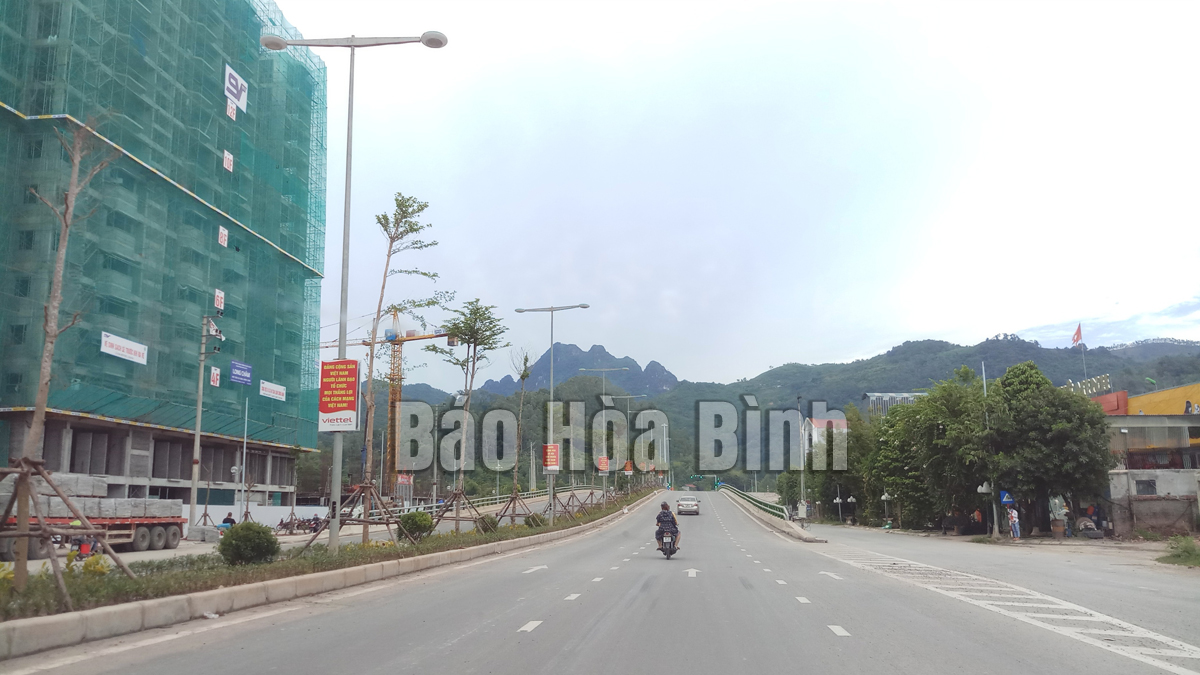
(HBO) – In contrast to the low level of public investment capital disbursement in the past, in the first nine months of this year, Hoa Binh disbursed 62 percent of the total capital assigned by the Prime Minister this year, making the province one of the localities with highest disbursement ratio in the country. The result was attributable to the outstanding efforts of the provincial Party Committee and People’s Committee in leading and directing the work, which is considered one of the most important political tasks of the province in 2021.
Receiving timely investment, the project to connect the National Highway No.6 with Chi Lang Road of Hoa Binh city has been put into operation as scheduled.
This year, Hoa Binh is allocated 3.78 trillion VND (166.61 million USD) in public investment capital. The figure approved by the provincial People’s Council for the year is 4.08 trillion VND. As of September 30, Hoa Binh had assigned 4.03 trillion VND to projects, equivalent to 107 percent of the plan.
In the first months of 2021, the disbursement of public investment capital faced many difficulties and obstacles. In that context, the provincial People’s Committee rolled out drastic solutions to speed up the disbursement. The committee held regular meetings with investors of projects to explore difficulties facing them for timely solutions.
For projects that could not disburse the capital immediately or those that have completed without spending all the allocated capital, the provincial People’s Committee has made adjustments or cut down the capital for them and transfer the capital to other projects. From August 25 to September 30, the committee made five times of adjustments with total capital of 320.6 billion VND.
For projects using official development assistance (ODA) that cannot be implemented, the committee has submitted proposals to the Ministry of Planning and Investment and the Ministry of Finance on adjustments with total capital of 397.9 billion USD.
Commenting on the disbursement of public investment capital, Chairman of the provincial People’s Committee Bui Van Tinh underlined that as of September 30, Hoa Binh had been one of the top 11 localities nationwide in the ratio of disbursement. This reflects the effective directions and efforts to keep a close watch on the situation to give suitable solutions, as well as the high determination of the investors. However, the task in the rest of the year is tough, requiring more efforts to complete.
Local authorised agencies and localities should work harder, keep close watch of each project, strengthen supervision and inspection and settle difficulties and problems hindering the disbursement of the
According to data from the Hoa Binh Provincial Party Committee, the industrial production index for the first six months of 2025 is estimated to have increased by 20% compared to the same period last year. This marks the highest year-on-year growth rate for this period since 2020.
In the first six months of 2025, Hoa Binh province’s export turnover was estimated at 1.145 billion USD, marking an 18.11% increase compared to the same period in 2024. Import turnover was estimated at $ 804 million, a 17.15% increase, which helped the province maintain a positive trade balance.
The lives of the ethnic minority farmers in Tan Lac district have gradually improved thanks to the new directions in agricultural production. This is a testament to the collective strength fostered through the professional associations and groups implemented by various levels of the district’s Farmers’ Union.
With the motto the "product quality comes first,” after nearly one year of establishment and operation, Muong village’s Clean Food Agricultural and Commercial Cooperative, located in Cau Hamlet, Hung Son Commune (Kim Boi district), has launched reputable, high-quality agricultural products to the market that are well-received by consumers. The products such as Muong village’s pork sausage, salt-cured chicken, and salt-cured pork hocks have gradually carved out a place in the market and they are on the path to obtaining the OCOP certification.
In the past, the phrase "bumper harvest, rock-bottom prices" was a familiar refrain for Vietnamese farmers engaged in fragmented, small-scale agriculture. But today, a new spirit is emerging across rural areas of Hoa Binh province - one of collaboration, organisation, and collective economic models that provide a stable foundation for production.
Maintaining growing area codes and packing facility codes in accordance with regulations is a mandatory requirement for agricultural products to be eligible for export. Recently, the Department of Agriculture and Environment of Hoa Binh province has intensified technical supervision of designated farming areas and packing facilities to safeguard the "green passport" that enables its products to access international markets.



